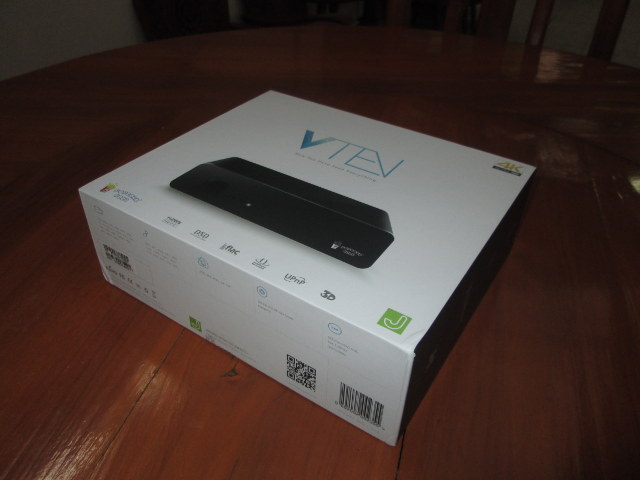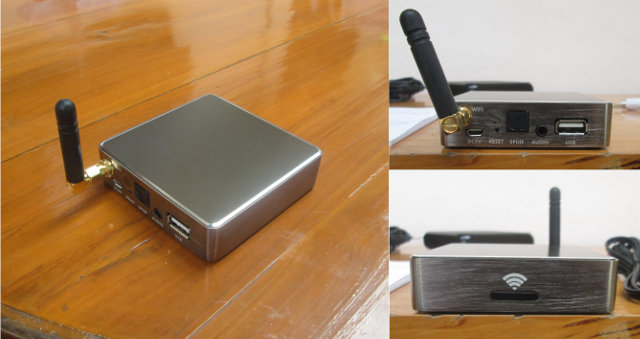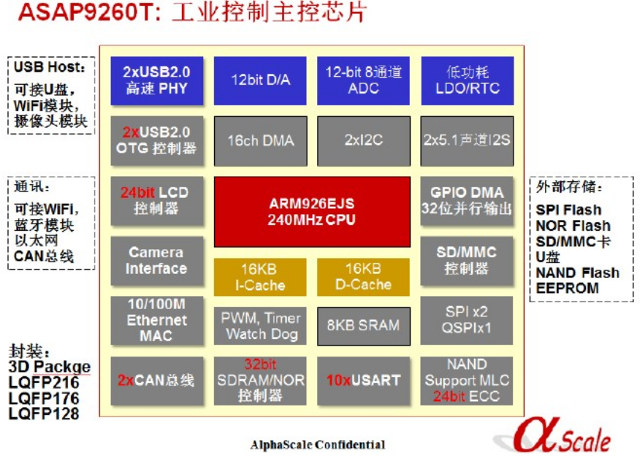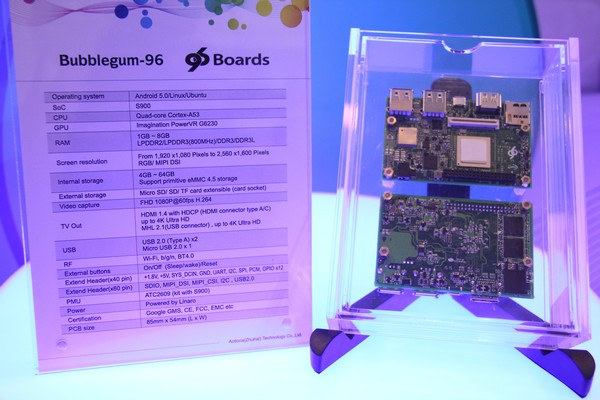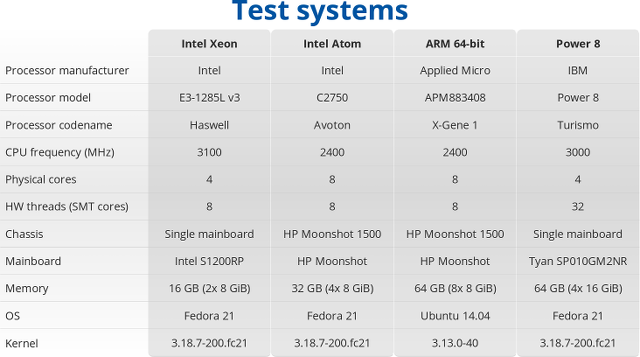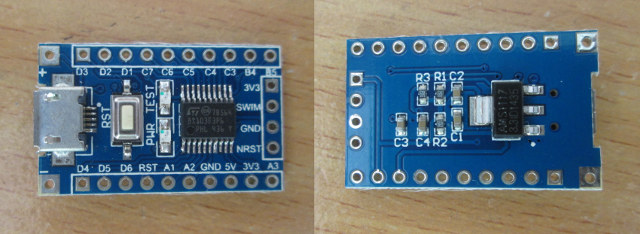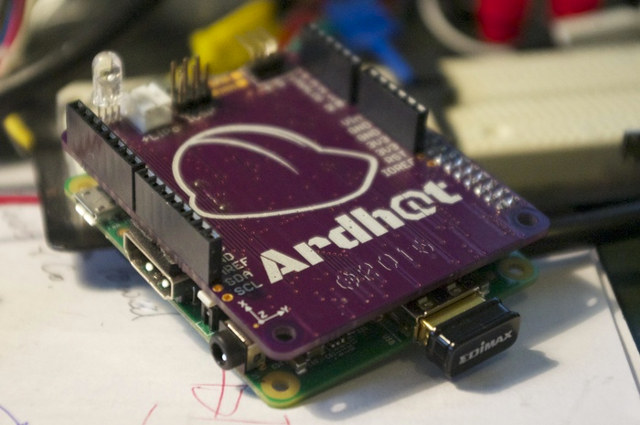Cloud Media (aka Syabas) sent me their latest Popcorn Hour VTEN media player. It supports HDMI output up to 4K, H.265 video codec, and features an eSATA connector, as well as optical and coaxial S/PDIF connectors. Today, I’ll show some pictures of the kit, and teardown the box to checkout the hardware, and in a few days, I’ll report on the user interface, video playback, and HDMI audio pass-through capabilities. Popcorm Hour VTEN Unboxing The unexpected device was sent via Fedex in the package shown below. It lists some of the key features such as H.265, DSD (Direct Stream Digital), FLAC, Matroska, UPnP, 3D, and 4K Ultra HD support, as well as the specs, and more features and package content in English, French, Italian, Spanish, German, Dutch, Swedish, and Danish. The box comes with an IR remote control and two AAA batteries, an HDMI cable, a SATA cable, a 5V/3A […]
RaidSonic Releases Firmware and Source Code for Atheros AR9331 Wi-Fi Audio Streamers
RaidSonic is a German company releasing products such as media players and multimedia accessories under their ICY BOX brand. One of those products is ICY Box IB-MP401Air music streaming received based on Atheros AR9331, and that looks very similar to SoundMate M2 I reviewed last year. But if you look on their product page, you’ll find out a few download links: ICY BOX IB-MP401Air (multilang) – The Quick Start Guide and User’s manual in English and German IB-MP401Air (Source code) – a 648 MB rar file with source code for U-boot and OpenWRT IB-MP401Air (Firmware) – The firmware IB-MP401Air (Open Source Software) – Just the open source licenses So I’ve downloaded the source code file (IB-MP401Air_Sources_and%20License_Terms.rar) to have a look. It has two compressed files, one with the license, and IB-MP401Air_Sources.tar.gz with the source code.
|
1 2 3 4 5 6 7 |
tar xzvf IB-MP401Air_Sources.tar.gz cd dns320B_GPL20150212/ ls -l total 12 -rwxr--r-- 1 jaufranc jaufranc 1400 Apr 16 16:49 building-the-firmware.txt drwxr-xr-x 14 jaufranc jaufranc 4096 Feb 12 10:54 dns320B_GPL20150212 -rwxr--r-- 1 jaufranc jaufranc 925 Feb 12 08:25 making-u-boot.txt |
The file showing how to build the firmware (OpenWRT) explains you should not use […]
AlphaScale ASM9260 ARM9 Processor Details and Development Board
Yesterday, as I wrote a Linux 4.0 Changelog, I noticed a new ARM processor called AlphaScale ASM9260, and I thought it might be interesting to find out more. A Google search would only return results from the Linux kernel mailing list and mirrors, so I checked out the code a bit to find out its an ARM9 processor made by AlphaScale Integrated Circuits Systems, Inc, based in Wuxi, China. The company website alphascale.com does not work, but I found out the processor is sold on Taobao for 38 RMB (~$6), and there’s also a development board (ASM9260DVK) for 498 RMB or about $80, and that’s basically the only two links were I could find any details. AlphaScale ASM9260T is arm ARM926EJS processor clocked at 240 MHz, 16GN I-cache and D-cache, 8KB SRAM, with the following peripherals: 32-bit SDRAM/NOR interface MLC NAND 24-bit ECC 2x USB 2.0 OTG, 2x USB 2.0 […]
Bubblegum-96 Development Board Complies with 96Boards, Features Actions Semi S900 64-bit ARM Processor
We’ve already have two 96Boards compliant boards formally announced with HiSilicon Hikey and Qualcomm Dragonboard 410c, and Actions Semiconductor was also expected to release theirs soon. Albeit it’s not been officially announced yet, the company has been showcasing their Bubblegum-96 board at the Hong Kong Electronics Fair 2015. Bubblegum-96 development board specifications: SoC – Actions Semi S900 quad core Cortex A53 with PowerVR G6230 GPU System Memory – 1 to 8GB LPDDR2 / LPDDR3(800MHz) / DDR3 or DDR3L Storage – 4 to 64 GB eMMC 4.5 flash + micro SD slot Video Output – HDMI 1.4 with HDCP up to 4K, MHL 2.1 up to 4K Connectivity – Wi-Fi 802.11 b/g/n, Bluetooth 4.0 USB – 2x USB 2.0 ports, 1x micro USB 2.0 port Expansion 40-pin LS (Low Speed) Expansion connector – UART, I2C, 12x GPIOs, SPI, PCM, 1.8V, +5V, GND… 64-pin HS (High Speed) Expansion connector – DSI, CSI, […]
Linux 4.0 Release – Main Changes, ARM and MIPS Architectures
Linus Torvalds “Ima Sheep” released Linux Kernel 4.0 on Sunday: So I decided to release 4.0 as per the normal schedule, because there really weren’t any known issues, and while I’ll be traveling during the end of the upcoming week due to a college visit, I’m hoping that won’t affect the merge window very much. We’ll see. Linux 4.0 was a pretty small release both in linux-next and in final size, although obviously “small” is all relative. It’s still over 10k non-merge commits. But we’ve definitely had bigger releases (and judging by linux-next v4.1 is going to be one of the bigger ones). Which is all good. It definitely matches the “v4.0 is supposed to be a_stable_ release”, and very much not about new experimental features etc. I’m personally so much happier with time-based releases than the bad old days when we had feature-based releases. That said, there’s a few […]
HPC Performance & Power Usage Comparison – Intel Xeon E3 vs Intel Atom C2720 vs Applied Micro X-Gene 1 vs IBM Power 8
Last year, the CERN published a paper comparing Applied Micro X-Gene (64-bit ARM) vs Intel Xeon (64-bit x86) Performance and Power Usage, and they’ve now added IBM Power 8 and Intel Atom Avoton C2750 processor to the mix in a new presentation entitled “A look beyond x86: OpenPOWER & AArch64“. So four systems based on Intel Xeon E3-1285L, Intel Atom C2750, Applied Micro X-Gene 1, and IBM Power 8 were compared, all running Fedora 21, except the HP Moonshot 1500 ARM plarform running Ubuntu 14.04 and an older kernel. All four systems use gcc 4.9.2, and Racktivity intelligent PDUs were used for power measurement. I’ll just share some of their results, you can read the presentation, or go through the benchmark results to find out more. HEP-SPEC06 is a new High Energy Physics (HEP) benchmark for measuring CPU performance developed by the HEPiX Benchmarking Working Group, and here it’s not […]
How to Program STMicro STM8S $1 Board in Linux
In January, I discovered there was such thing as a one dollar development board based on STMicro STM8S103F3P6 8-bit MCU with 1KB SRAM, 8KB flash, and 640 bytes EEPROM, some GPIOs as well as I2C, UART, SPI, ADC, and PWM signals. Links to documentation and source code were provided, but development tools were only Windows based. However, one of my reader informed me SDCC (Small Devices C Compiler) supported STM8, and development in Linux should be feasible. So I decided to buy the board on eBay for $1.62, as well as an ST_link V2 programmer for STM8 / STM32 for $4.52 in order to flash the firmware. The board came pretty quickly, i.e. within 2 to 3 weeks. But due to a lost package, the programmer took nearly 3 months to reach me, as the seller had to re-send after I failed to receive it within 2 months. It comes […]
ARDHAT adds Arduino Shield Compatibility, an ISM Band Radio to Raspberry Pi and ODROID-C1 Boards (Crowdfunding)
NinjaBlocks created Pi Crust add-ons board adding a 433MHz radio and Arduino compatibility to the Raspberry Pi Model A & B a few years ago, but the product has since been removed from their store. But a startup called ubIQio has now created a similar product compatible with Raspberry Pi Model A+, B+ and B2, as well as ODROID-C1 which also comes with a 40-pin R-Pi header. The ARDHAT board is a HAT compatible add-on board with an Atmel MCU, Arduino headers, as well as an optional long range mesh ISM radio (433, 868 and 915 MHz) and various sensors. There are four versions of the board: Basic Ardhat, Ardhat-I, and Ardhat-W and Ultra, which share the following specifications: MCU – Atmel MCU @ 16MHz Headers and I/Os Arduino compatible header accepting 5V Arduino shields 12 ch PWM O/P, 6 ch analog I/P Real-time Clock Programmable Power/Navigation combo switch Programmable […]


